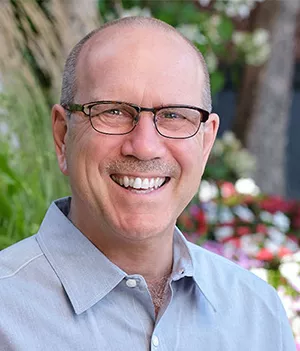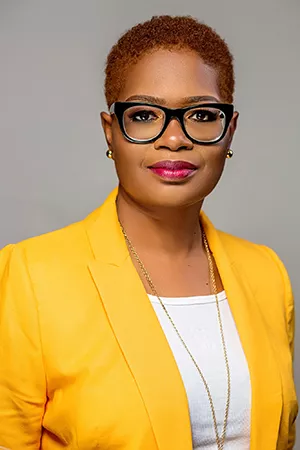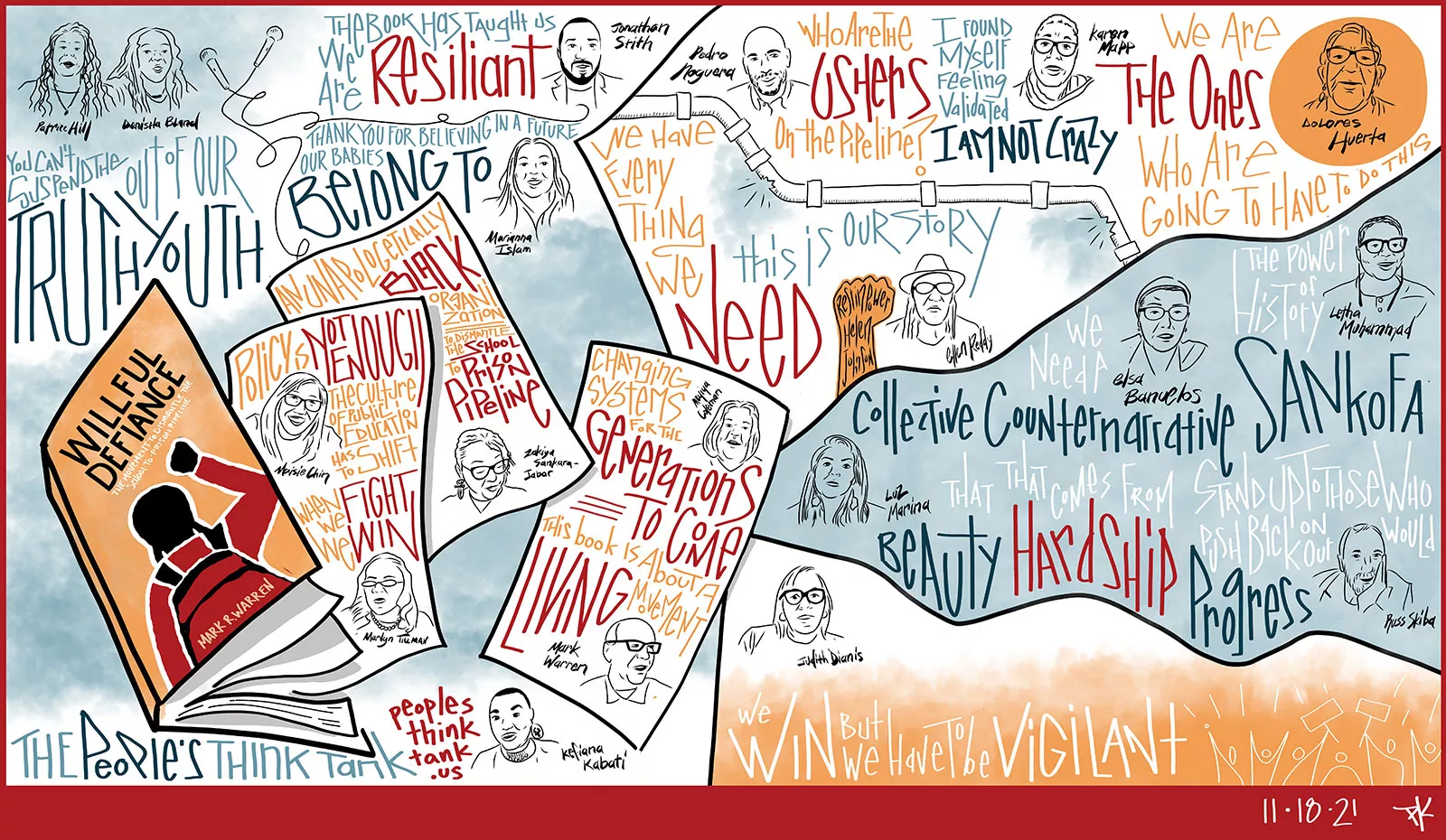Key Takeaways
- Zero-tolerance policies continue to harm Black and Brown students across the country, but a growing movement of young people and students of color and their families are advocating for better alternatives.
- To learn how educators and their unions can be better partners with parents and community organizations, NEA Today spoke with researcher, author, and NEA higher education member Mark R. Warren, as well as with Letha Muhammad, executive director of the Education Justice Alliance a member of the Coordinating Committee of the national Dignity in Schools Campaign, the nation’s largest coalition working to dismantle the school-to-prison pipeline.
During the 1990s, many school district adopted zero-tolerance policies, mandating suspensions for what school officials called willful defiance, or minor offenses such as cursing, chewing gum, or not taking off a hat. This gave way to unjust disciplinary actions that disproportionately put students of color on a path toward the criminal justice system.
In his most recent book, “Willful Defiance: The Movement to Dismantle the School-To-Prison Pipeline,” researcher, author, and NEA higher education member Mark R. Warren spotlights the voices of Black and Brown parents and students who are organizing and building movements to dismantle the school–to–prison pipeline in their local schools.
To learn how educators and their unions can be better partners with parents and community organizations, NEA Today spoke with Warren, as well as with Letha Muhammad, executive director of the Education Justice Alliance, in Raleigh, N.C., and a member of the Coordinating Committee of the national Dignity in Schools Campaign, the nation’s largest coalition working to dismantle the school-to-prison pipeline.
From the very beginning, the book describes how kids are getting expelled based on willful defiance, or subjective judgment such as “disruptive,” “annoying,” and “boisterous” behaviors. What’s really at the root of these suspensions?

Mark R. Warren: First, we must understand zero-tolerance discipline and policing in our schools. The term zero-tolerance started in the 1980s, with the war on drugs, and then was transferred into schools during the 1990s. It’s a part of what civil rights lawyer and author Michelle Alexander called, “the new Jim Crow” and the rise of mass incarceration and criminalization in Black and Brown communities.
The attitudes the public and many teachers had toward young African American boys, but also Latino boys and Black and brown girls, were rooted in racist stereotypes…and targeted them as being super predators, criminals, or bad people who must be disciplined and controlled and, on the basis of any small misbehavior, removed from our schools.
Unfortunately, that taps into 400 years of a racist narrative. It's not just contemporarily: all of us in this society are raised and live in that narrative.
Letha Muhammad: We can't separate what happens in society from our schools, and so at the root is this assumption, based on racism, biases, and classism, of who Black and Brown children are or who they aren't. This impacts the ways in which Black and Brown students are viewed, particularly families of low-wealth status. So, we have to think about not only race, but look at the ways in which class is interpreted in our country, and then drill that down to the school level.
To help drill down, what questions should teachers and school staff consider before taking any action toward a student?
LM: Ask yourself, “If this were a White student what would I do?” You have to ask that question because the disparity is so different when it comes to the ways in which Black and Brown kids are punished compared to White students. A second question: “Why is punishment necessary?” Instead, what if we shifted our mindset within our schools to think about creating space for young people to be what we say we're trying to help them become: critical thinkers. If our education system wants to create critical thinkers, then punishment can't be the norm.
MRW: If teachers are not on the receiving end of racism, then they may not see it as clearly as people who are. And so, there's a historical, structural feature to all of this. When teachers are sitting in a classroom, one of the questions to ask is “am I acting in a way that's part of the system that’s criminalizing our young people, or is there a different way of me thinking about what's going on in front of me and supporting our students and their families rather than thinking towards discipline and punishment?”
The book references how mass incarceration starts in schools. I imagine there are many educators who would be mortified at the thought of contributing to the educational injustice of Black and Brown kids. What are some practices and behaviors educators need to recognize and/or take to ensure they’re a part of the solution, not the problem?

LM: Pledge to be an anti-racist educator and administrator and commit to equity. This will help get some of the changes we need, such as having a culturally affirming and responsive pedagogy in classrooms. I can't count the number of times my kids have said to me “I don't see myself in this” or “this doesn't make any sense” because the material wasn’t reflective of our community experiences.
MRW: One thing educators can do is to think about alternatives to discipline and punishment. There are a whole set of restorative practices and restorative justice approaches that help with student misbehavior.
But what would also be helpful is for educators to look at the adults who have set up this system of discipline and punishment in schools and our larger society. Who is being disciplined and punished? What do the disparities look like? What are the attitudes and habitual practices, such as calling the police or school resource officer (SRO) for minor issues or when there is a disagreement over whether a student has a cell phone on their person? It’s the larger system not just student misbehavior that needs to be addressed.
NEA Resources: Learn how to introduce restorative practices to your school to help provide a positive, effective alternative to exclusionary discipline.
The school-to-prison pipeline goes beyond individual actions. A system exists in which educators are trapped in, and it makes things worse for kids (especially, Black and Brown kids). What are some practical things educators can do to avoid this pipeline?
MRW: We need individual educators to join this movement and ask themselves the questions we've been talking about here, and we need to change the policies that are in place—both must happen. For example, we need to remove police from schools. We need to change our discipline codes so that you can't suspend students for willful defiance. And then, as Letha said, we need to implement culturally relevant curriculum.
And when you eliminate suspension for willful defiance and educators are participating in restorative practices or reaching out and engaging with young people and their families in a different way, this pushes us towards systemic transformation.
Q. “Willful Defiance,” chronicles how in the past teacher unions were in favor of zero-tolerance policies. How do you envision unions being better partners?
MRW: It's the same question for the union as it is for an individual educator. Are you acting in a way that is supporting a school-to-prison pipeline or are you working to dismantle it? In the book, I document how many teachers’ unions opposed efforts by Black community members who were fighting for educational justice for their children. That's the reality we must face, and rather than opposing parents and young people who are organizing to change racist policies and practices, unions should find common ground and start to listen.
We at times hear how educators don’t know who to work with or who can help. Who would be the first person an educator should contact in their communities?
LM: It can start with the families in your school who are oftentimes seen as the least desirable. For example, it’s the parents who may not show up in the prettiest of ways or show up angry to school. Ask yourself, why is the parent angry? Is the anger justified? Oftentimes, these are the parents that educators need to create space for and connect with. Also, pay attention to who is showing up at school board meetings and advocating for equity, culturally responsive curriculum, or ending suspensions and expulsions for Black and Brown students—connect with them.
MRW: There are often youth organizing and student organizing groups as well. They're sometimes gathered around community-based organizations, such as religious congregations of a variety of faiths. Young people are often active in the community around educational justice and other issues like climate justice. It’s also thinking about what it means to be an educator in the community in which you teach, and being a part of that larger community, connecting with parents, young people, or other community-based organizations.
Stanford University’s school of education had a program where teacher-candidates had to complete an internship with a community-based organization in the community they wanted to teach. That’s exactly what we need because then you start to learn about the community in a different way and see people as agents of change in their own community.
The movement across the country being led by students to remove SROs and law enforcement presence from schools has had some impact. If students are successful at removing SROs and law enforcement from schools, is that enough? What else needs to happen from your perspective to create the kinds of schools you envision?
MRW: Removing police from schools is necessary and a first step. But it's really about the larger system, which involves the curriculum, the approach educators take with students, valuing communities, and funding schools. What I would like to see, and what I hope the book shows, is that once we start to dismantle the school- to-prison pipeline, a larger conversation can take place about what public education should be in this country.
Some of us have been saying this for years now, but if public education is based on White supremacy…then what we are talking about is the transformation of our public education system. And where do we look for new solutions and new ways of thinking about education? We need to be looking to communities and at the social movements in those communities where we find practices that have sustained and helped young people flourish through four hundred years of White supremacy.
LM: No, it's not enough. We can walk and chew gum at the same time. We can remove police and punitive discipline, while creating space for transformation that leans toward care, love, and growth. For this to work, it needs to apply to the adults in the building as well.
In my school district, we've been pushing for a community-based, worker intervention model, where an individual—not an SRO—from the community is trained in restorative practices and conflict resolution, and builds authentic relationships with students, parents, teachers, and administrators. This way, before something goes down the wrong road, we've already created a space for young people and teachers to have a place to go.
What I envision for our public education system is a space that is liberating, transformative, and values all who show up…not just folks that fit under a White supremacist model or who may ascribe to Whiteness because that's been the norm in our greater society. Instead, it's a place that embraces transformation in a comprehensive way and that impacts the collective.
Learn how local unions support the movement for police-free schools.
______________________________________________________
For more information about “Willful Defiance: The Movement to Dismantle the School-To-Prison Pipeline,” visit peoplesthinktank.us/willful-defiance, which also includes links to resources on organizing and advocacy to advance a vision of safe and just schools.
The Education Justice Alliance (EJA) is a group of concerned individuals in Wake County, North Carolina who are working for a reduction in the number of public school students pushed off the academic track through unfair suspensions, harsh discipline policies, and academic failure. EJA is a non-partisan grassroots group that participates in civic engagement efforts. Go to ejanc.org to learn more, and visit the Dignity in Schools Campaign website for more information and an online toolkit for organizing to dismantle the school-to-prison pipeline: dignityinschools.org/toolkits/stpp/.


